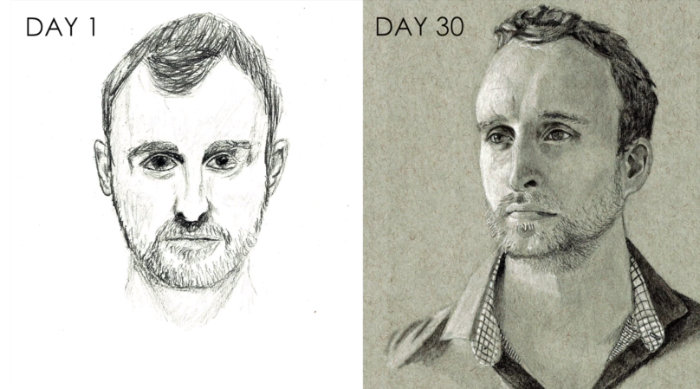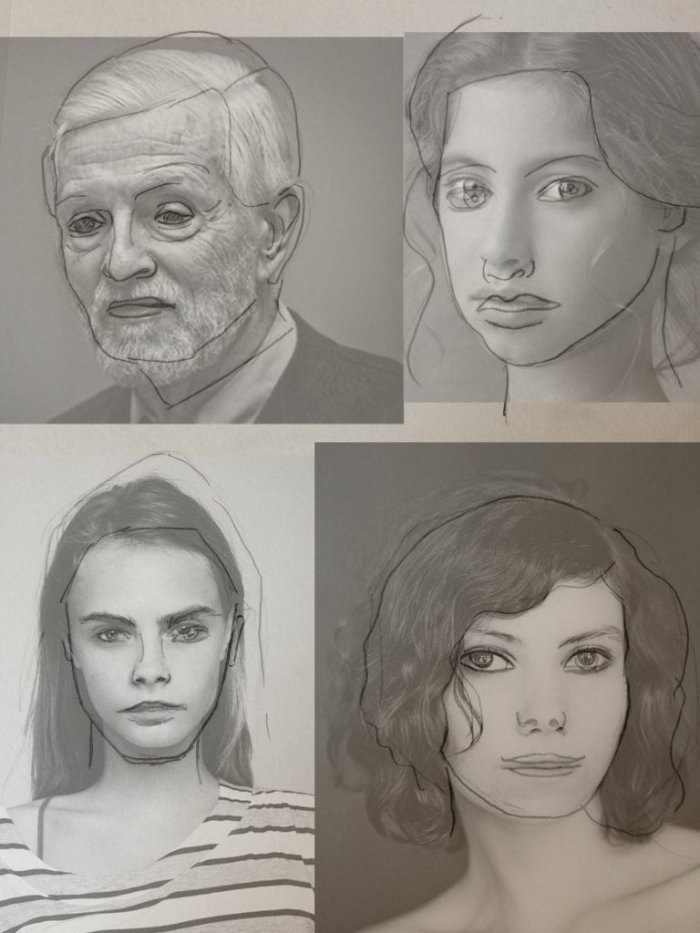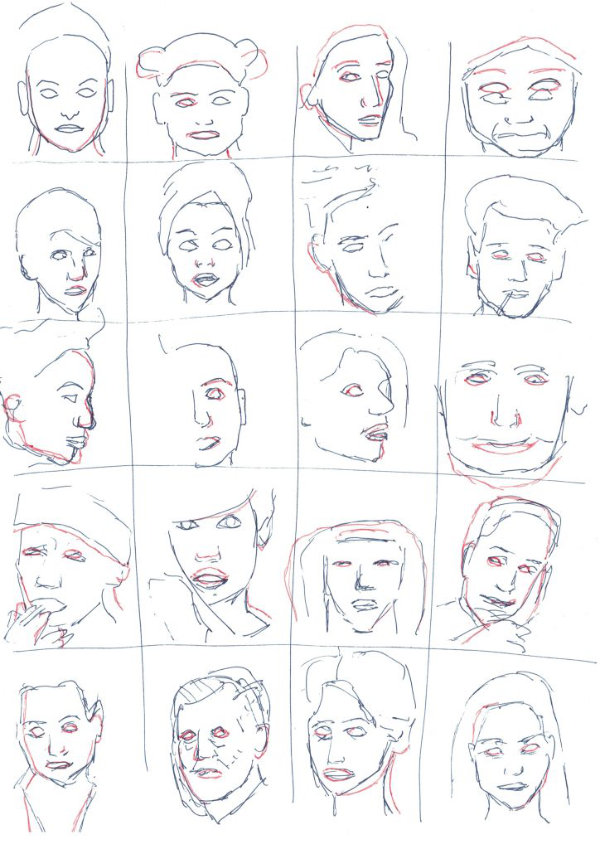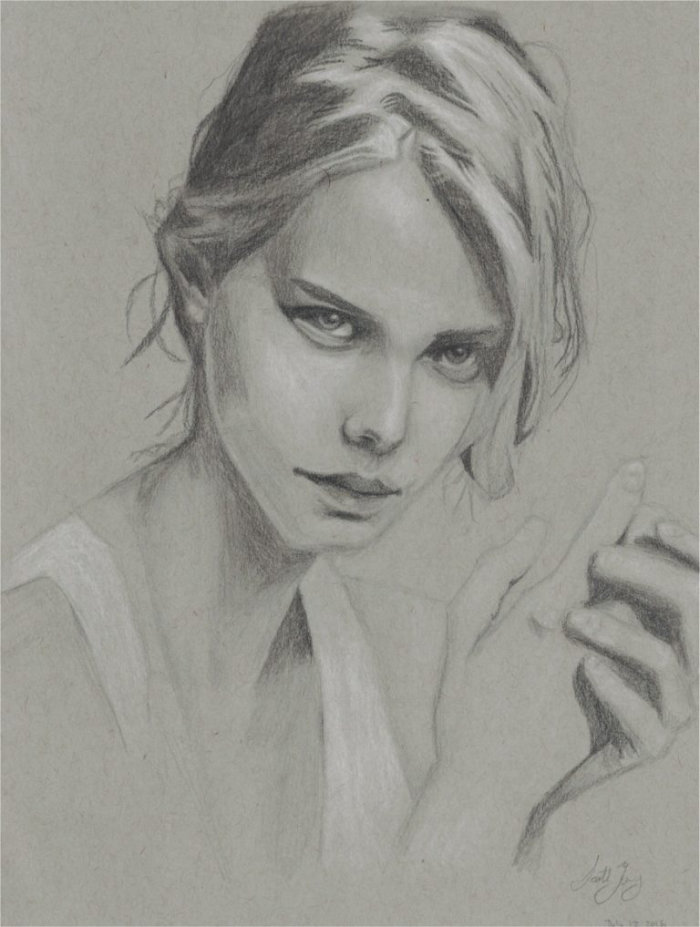How to learn to draw portraits
TL;DR: Follow the advice of Scott Young, the author of Ultralearning. 1. Learn basics using Drawing on the Right Side of the Brain, 2. Do a lot of 20-second line drawings and then overlay them on the reference photo for rapid feedback, 3. Take Vitruvian Studios' portraits course
Scott Young, author of Ultralearning, shares how he went from being unable to achieve likeness in any of his face drawings to being quite good in 30 days.

He describes the project on his blog.
My summary:
Basic general drawing skills
He used the book Drawing on the Right Side of the Brain to get comfortable with the basics of drawing. If you are starting from scratch, start here. If you're already pretty good at drawing you might want to skip this book and get onto portrait-specific practice.
20-second line drawings
You have to be able to be good at placement of features on a face and the subtleties in shapes before worrying about fancy shading. No amount of fancy details can make up for wrong basic shapes.
And, if you need to make every drawing to be as good as you can, you will spend hours trying to perfect each and comparitavely little time on the fundamentals. So start by doing high quantities of simple line drawings. Scott tried to only spend 20 seconds on each. He used pen so that he wasn’t tempted to erase or shade.
It sounds like he did was this: He had a reference photo. He would do a bunch of quick line drawings. Then, he would take pictures of his attempts. Using GIMP (like Photoshop but free), he would overlay his line drawings over the reference photo. Now he could see where he’d gone wrong.
If you haven’t trained your eye it’s easy to see that something is wrong, but it’s actually quite hard to know adjustments to make. By doing these overlays, he could quickly get this feedback.

Scott would draw in red where his lines should have been.

This technique of lots of reps, focusing entirely on the most important fundamentals, with quick feedback, is described by Josh Waitzkin in his book The Art of Learning. His directive for learning is to “make smaller circles”, meaning that you should focus on tiny aspects of the skill and try to get rapid feedback on that one thing. If you try to learn an entire complex skill all at once, the feedback will be slower and less clear.
Vitruvian Studios course
At some point Scott felt like he hit a plateau. He could sometimes draw someone’s likeness, which was an improvement, but he would have to spend a lot of time making adjustments. It’s common in learning processes to make fast progress and then plateau.
After a lot of searching online for learning materials that might lead to a breakthrough, he found this course: http://vitruvianstudio.com/course/portrait-drawing/
The course gave him a system for more accurately placing items on the face and getting likeness right.

It also taught him the techniques he needed for going beyond line drawings to finishing portraits (shading, etc.)
